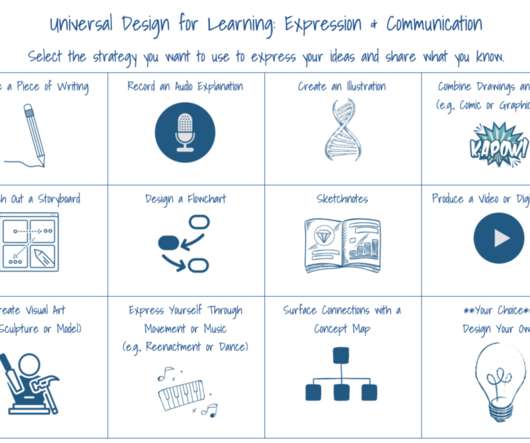Universal Design for Learning and Blended Learning: Action and Expression
Catlin Tucker
SEPTEMBER 20, 2020
In my last blog, I focused on the Universal Design for Learning (UDL) principle of representation. In this post, I want to explore the third, and final, UDL principle of action and expression. I highlighted some of the affordances available online that can help students to manipulate digital information to make it more accessible.













Let's personalize your content